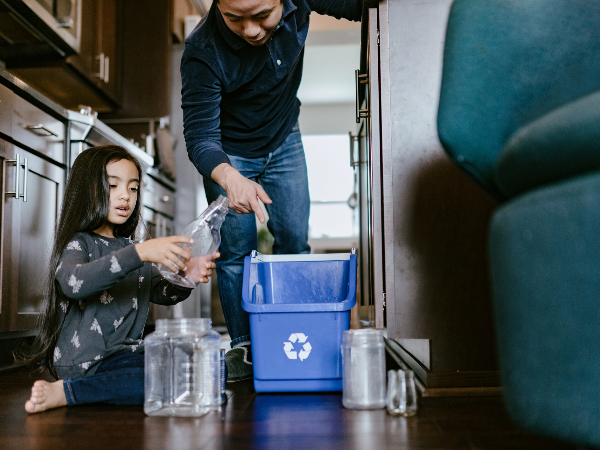
Unless you have been away on an extended vacation or are avoiding all news, you know that recycling faces contamination challenges.
In most communities, items you place into your recycling bin get mixed with everyone else’s and then sent to a large plant called a Materials Recovery Facility. At this plant, paper, cardboard, glass, cans, and plastics are separated by type and then shipped to companies that do additional processing. Eventually, the can or plastic bottle you recycle becomes a raw material in making a new product, such as a new can or bottle. That bottle or can is filled and sent to a store, and the process begins again. At least, that is how it is supposed to work.
Recycling is a group project!
Unfortunately, not everyone in the group is doing their part. Items that are dirty or just don’t belong are going into recycling bins. Dirty recyclables contaminate clean material. Items that don’t belong can get hopelessly tangled with other items or in machines at the sorting facility. Yucky items, such as diapers, can create a huge mess and ruin entire loads of recyclables.
To ensure you recycle correctly, please follow all instructions provided. In most communities, you can:
- Collect these items: food and drink cans, glass bottles and jars, plastic bottles and jugs, and paper and boxes.
- Check the size. Recyclables that go into the bin should be larger than a credit card or more than 2 by 2 inches.
- Empty all food and beverage containers. Wipe or rinse them out. Allow containers to dry.
- Keep caps ON plastic bottles and jugs.
- Remove caps from glass bottles and jugs.
- If in doubt, toss it into the trash.
If you have questions about what, where, or how to recycle locally, don’t guess! Investigate instead by contacting your local waste or recycling authority.
Image credit: RyanJLane | E+ | Getty Images
